
Over the past decade or so, beavers have been reintroduced to many parts of the UK
©Szymon Bartosz/Shutterstock
How beavers stay wet during UK drought
Josh Davis
First published 5 August 2022
As parts of the UK experience one of the worst droughts in a century, a little patch in the southeast of England is babbling with life.
In a licenced trial, a pair of beavers have been installed on the Knepp Wildland project in Sussex, where within a matter of months they have already transformed what was once a small stream into a bustling wetland thronging with life.
During the month of July, the UK hit many alarming climate records.
With temperatures exceeding 40°C for the first time ever, large parts of southern UK have also been experiencing a chronic lack of rain leading to one of the worst droughts in over 100 years.
The concerns of rivers and reservoirs running dry has led to some counties in the England, such Kent and Sussex, to introduce water restrictions, including bans on hose pipes, washing cars and filling paddling pools.
But as the grass turns brown, trees start dropping their leaves, and rivers and lakes dry up, in a quiet corner of Sussex there is an exception.
In February this year, a pair of Eurasian beavers were introduced to the Knepp Wildland, a pioneering rewilding project on former farmland in West Sussex. It is the site of the first major lowland rewilding project in England, when some 20 years ago the decision was made to take the hands off the wheel and let nature take the driving seat.
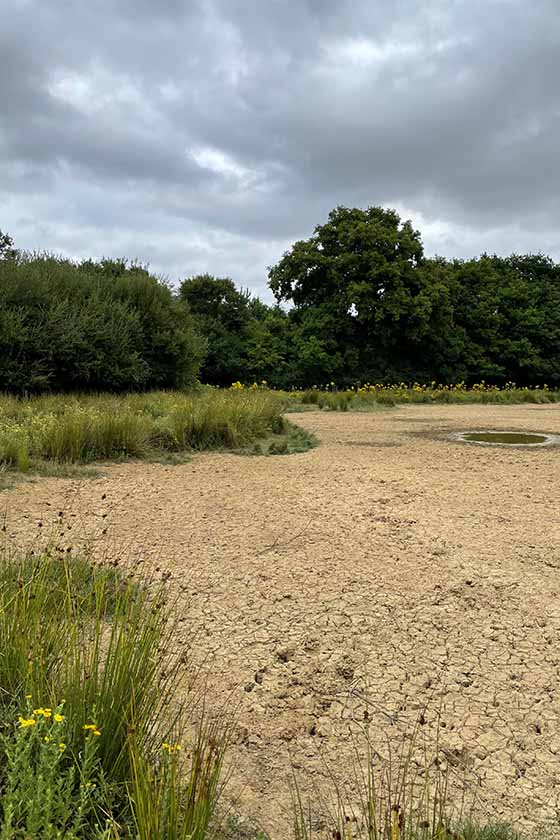
With the UK drought in full swing, watering holes at Knepp are drying up.
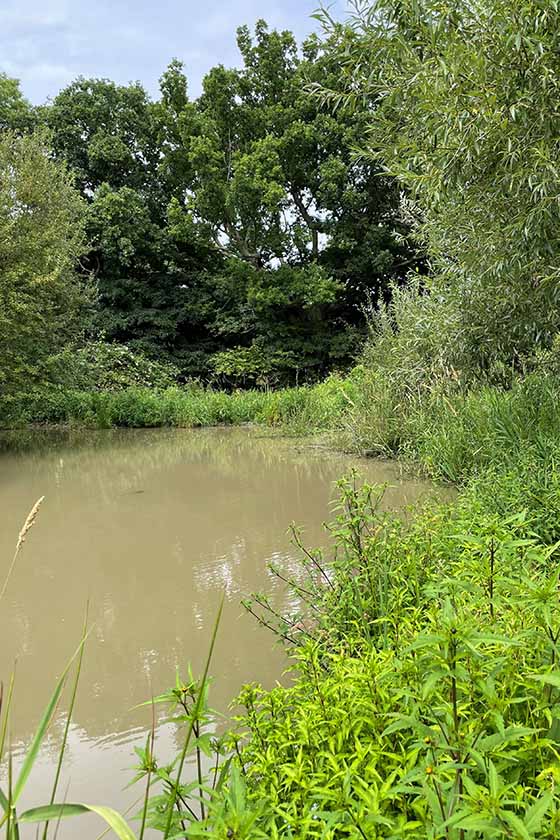
By stark contrast, the beaver pond is brimming with water and full of life.
The beavers are currently confined to a two-hectare enclosure as it illegal to release the animals into the wild in England. But while the fence may stop the charismatic rodents from straying, it doesn't prevent their benefits from literally spilling out into the surrounding landscape.
Walking across the dry and parched meadow leading up to the beaver pen, the underlying clay is baked rock-solid and beginning to crack open, forming deep schisms into the earth. But then the ground suddenly starts to become springy and soft and leads to standing water and a verdant wetland. All this before even entering the fenced enclosure.
Penny Green is a resident ecologist at Knepp Wildland, where she coordinates the biological monitoring of the rewilding project, including their two newest editions.
'We've seen really amazing results just in the five months they've been here,' explains Penny. 'The beavers have already made a little network of ponds from the damming that they've done, they've been chewing back some of the vegetation in the ponds and we've got little beaver lawns.'
'But the most interesting thing for us at the moment is that even though we're in a huge drought year, and most of the little streams either side of the enclosure are running dry, here in the beaver pen it is the most amazing wetland oasis all around us.'
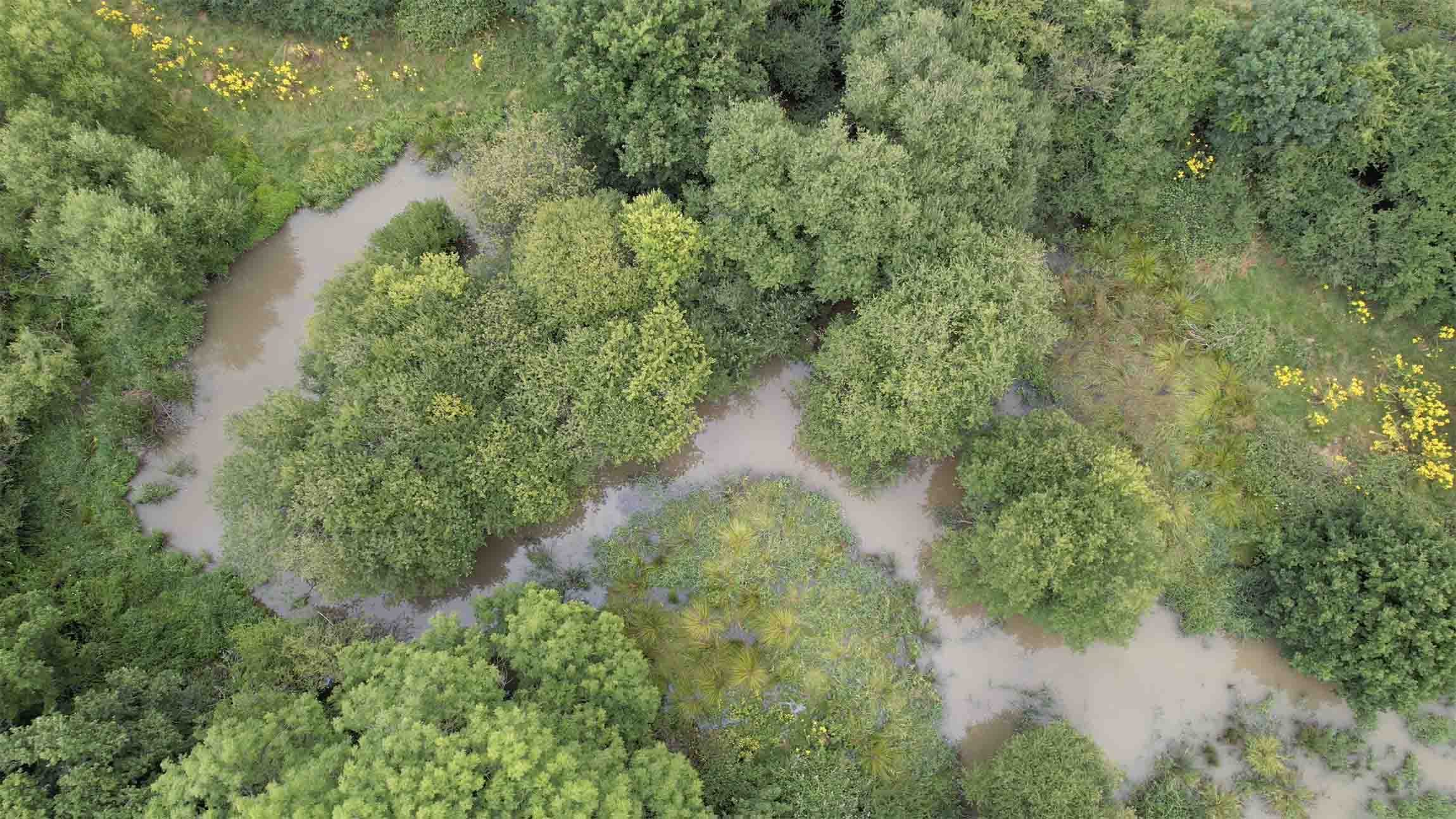
Within just five months, the beavers at Knepp Wildland have created an intricate pond system, with channels, wetlands and beaver lawns.
Beaver Waterworld
At the centre of the beaver enclosure is a sprawling system of ponds and channels connecting them. Along the leading edge of this water world is an intricately constructed dam, made by the beavers by driving gnawed branches into the ground and piling up sticks and organic matter, with a final topping of mud.
As the pond grows and spurred on by the sound of trickling water, the beavers will extend the edges of the dam, flooding more and more of their environment. This in turn creates more wetland and allows the beavers to access more of their preferred food of aquatic plants, leaves and bark.
As the dam and beaver lodge ages, the branches take root and start growing again, creating a living structure. As a result, the beavers at Knepp have created something of a little oasis.
And in a time of drought, it has already started to attract a huge range of wildlife. Dragonflies and damselflies flit through the reeds that fringe the ponds as reed warblers and chiffchaffs call from amongst the trees. The team at Knepp have already begun monitoring the amphibians that will hopefully be taking up residence, while the abundance of insect life and the bats they attract are also being studied.
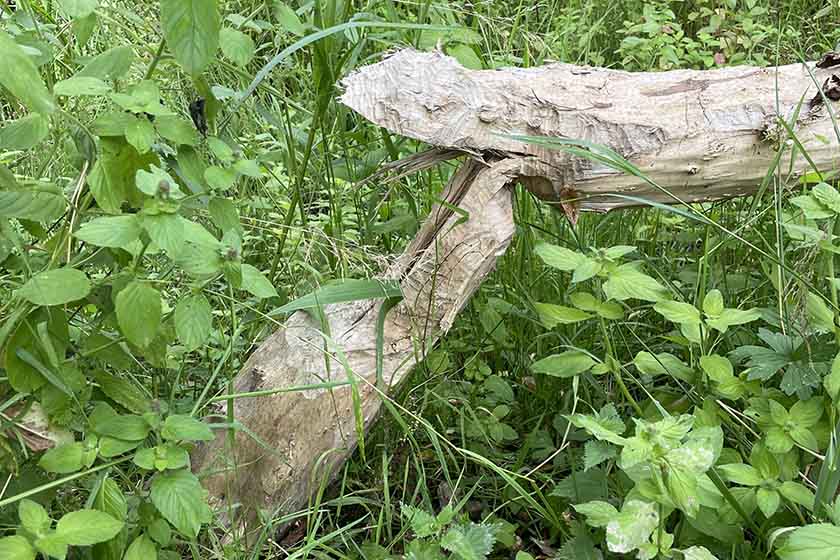
The beavers are having a profound impact on their environment, as they gnaw down trees to get at the branches for food.
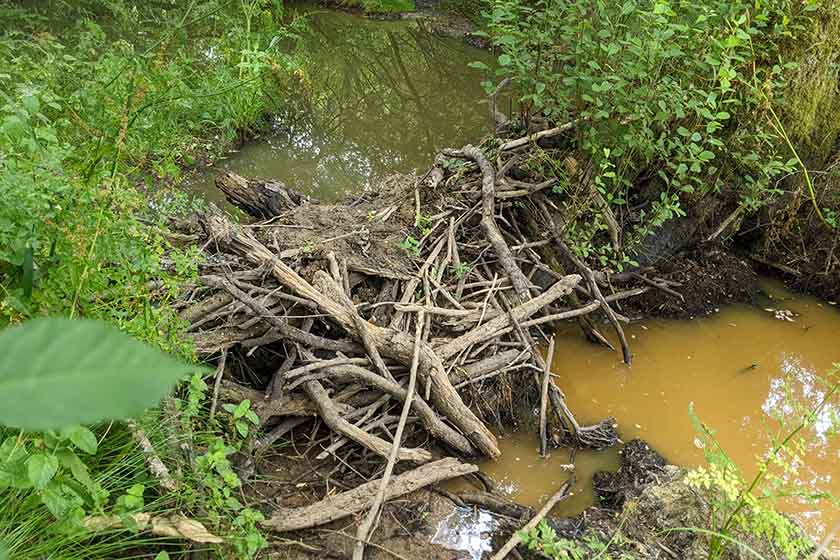
The beavers have built a number of dams in their enclosure, creating a tiered pond system.
These biodiversity benefits have a knock-on effect in the surrounding landscape. The water backing up above the dam has created further wetlands outside of the fenced area, where large mammals such as deer, pigs and cows can come down to slake their thirst.
One of the key aspects of beaver dams, however, is simply the fact that they are not perfect.
'They're providing opportunities during the summer months because they have slightly leaky dams,' says Penny. 'There will be a bit of water trickling out when there perhaps wouldn't be so much water in our landscapes during drought years like this year.'
'So they'll be letting a little bit of water out of these dams throughout the summer.'
This is clearly evident downstream of the beaver enclosure at Knepp, where the ground is still marshy and the sound of running water can heard through the buzz of the insect life.

The beaver ponds act in effect like a little air conditioning unit in the wider Knepp landscape.
Cooling the environment
But the increased amount of water in the landscape during a time of drought doesn't only help wildlife by quenching its thirst.
By constructing ponds, the beavers can also help to cool the water that they store, as deeper water typically has a lower temperature. As this water spills out into the environment, either via groundwater seepage or the leaky dams, it further cools the surrounding landscape.
In addition to this, the evaporation of water from the large surface areas of the ponds helps to cool the air itself, in effect creating a natural pocket of air conditioning within the parched landscape.
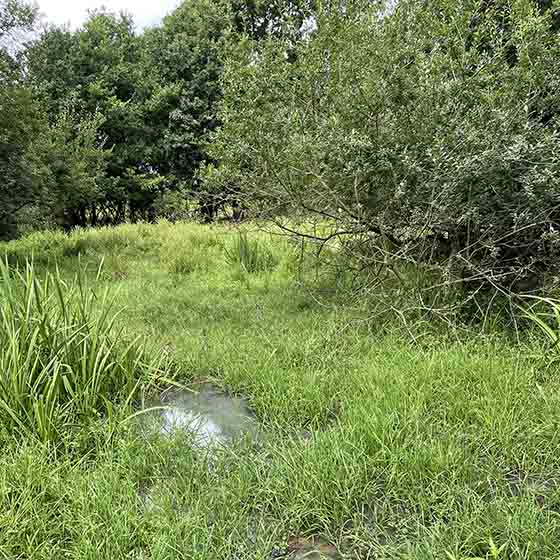
While the beavers are confined to an enclosure, their benefits are literally spilling out.
But the benefits of these tenacious ecosystem engineers are not limited to the hot summer months. It would be understandable to worry that such noticeable water retention could become a serious issue during the wetter months, as the heavy rains would have little chance to drain away. But conversely beavers can also help to mitigate this weather too.
'Beavers create all sorts of wonderful habitats for other wildlife, but in turn they also provide lots of ecosystem services that helps us as humans,' explains Penny. 'They help to alleviate flooding by holding back water especially in heavy downpour events where we get heavy rain.'
'They are holding on to water and slowing the flow down, which is great.'
The slowing down of water is key, as it gives the ground and the surrounding vegetation time to absorb much more of the rains than would occur if the water was allowed to run directly into streams and rivers, which can also cause bigger issues of flooding further downstream.
The future for English beavers
The team at Knepp have a five-year licence to keep the beavers on site, but the acceptance of the aquatic rodents as a vital part of the English countryside is rapidly advancing.
While it is currently illegal for any beavers to be released into the wild in England, this year the UK government has finally given the animals legal protection. This means that from 1 October 2022 it will be illegal to deliberately capture, kill or injure beavers, or damage their lodges or dams. This follows similar protections given to the beavers in Scotland in 2019.
There is also an ongoing consultation about the beaver's future in the UK and if the animals should be released into the wild. If this is passed, it will mean that hopefully in the near future the fences at Knepp could be dropped, and the pair - plus any of their potential kits - would be allowed to go out into the wider landscape.
After 400 years of absence, the rivers and streams of Sussex may once more be home to these resilient ecosystem engineers.
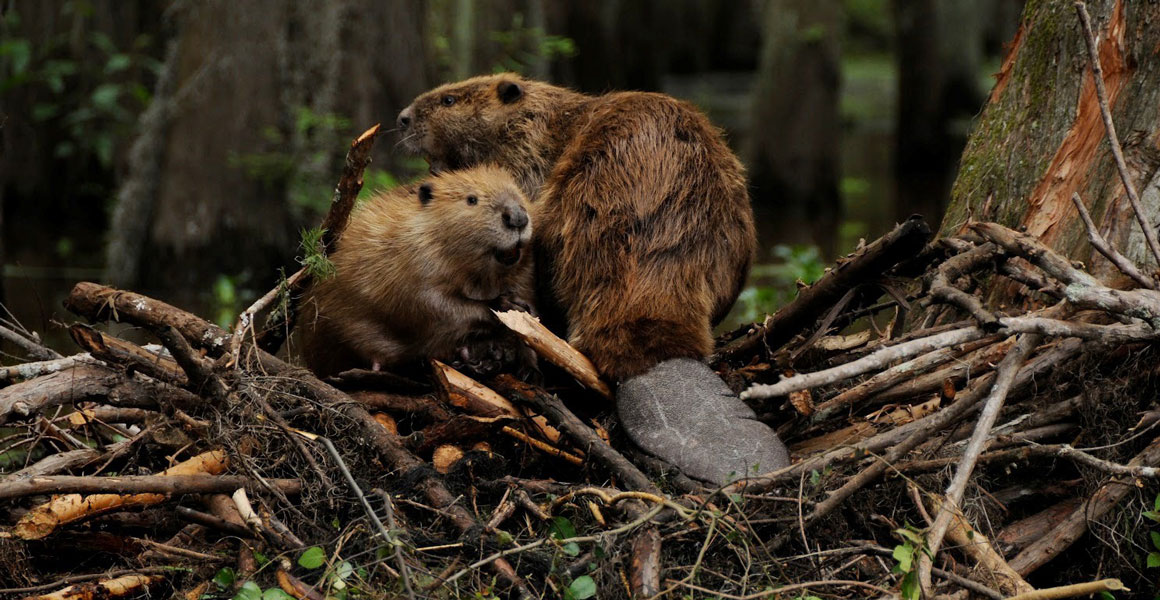
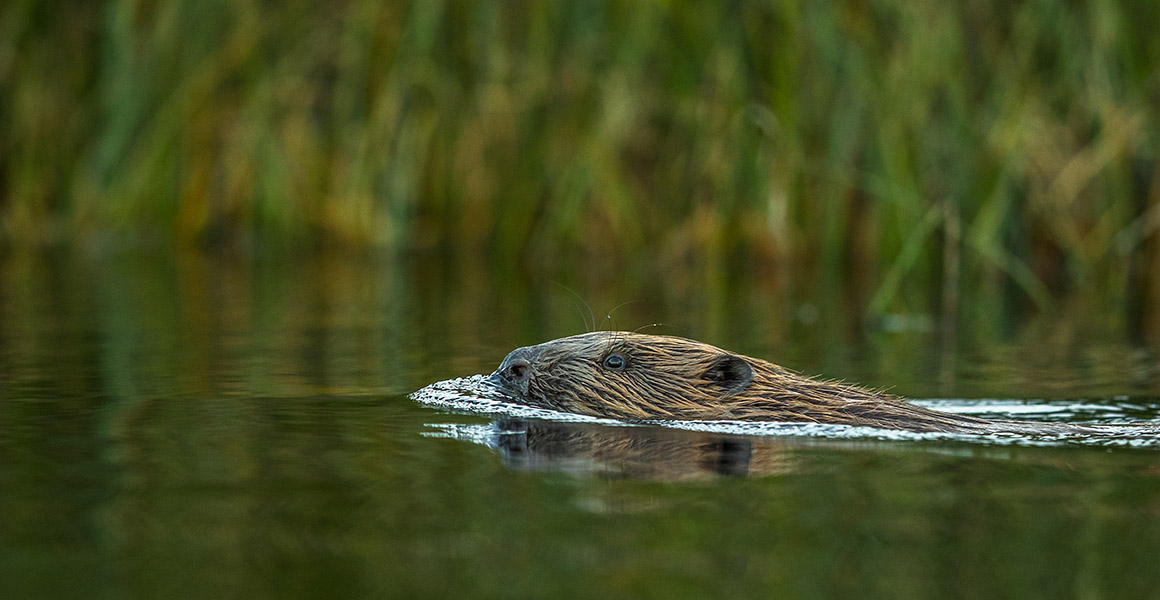

Don't miss a thing
Receive email updates about our news, science, exhibitions, events, products, services and fundraising activities. We may occasionally include third-party content from our corporate partners and other museums. We will not share your personal details with these third parties. You must be over the age of 13. Privacy notice.
Follow us on social media